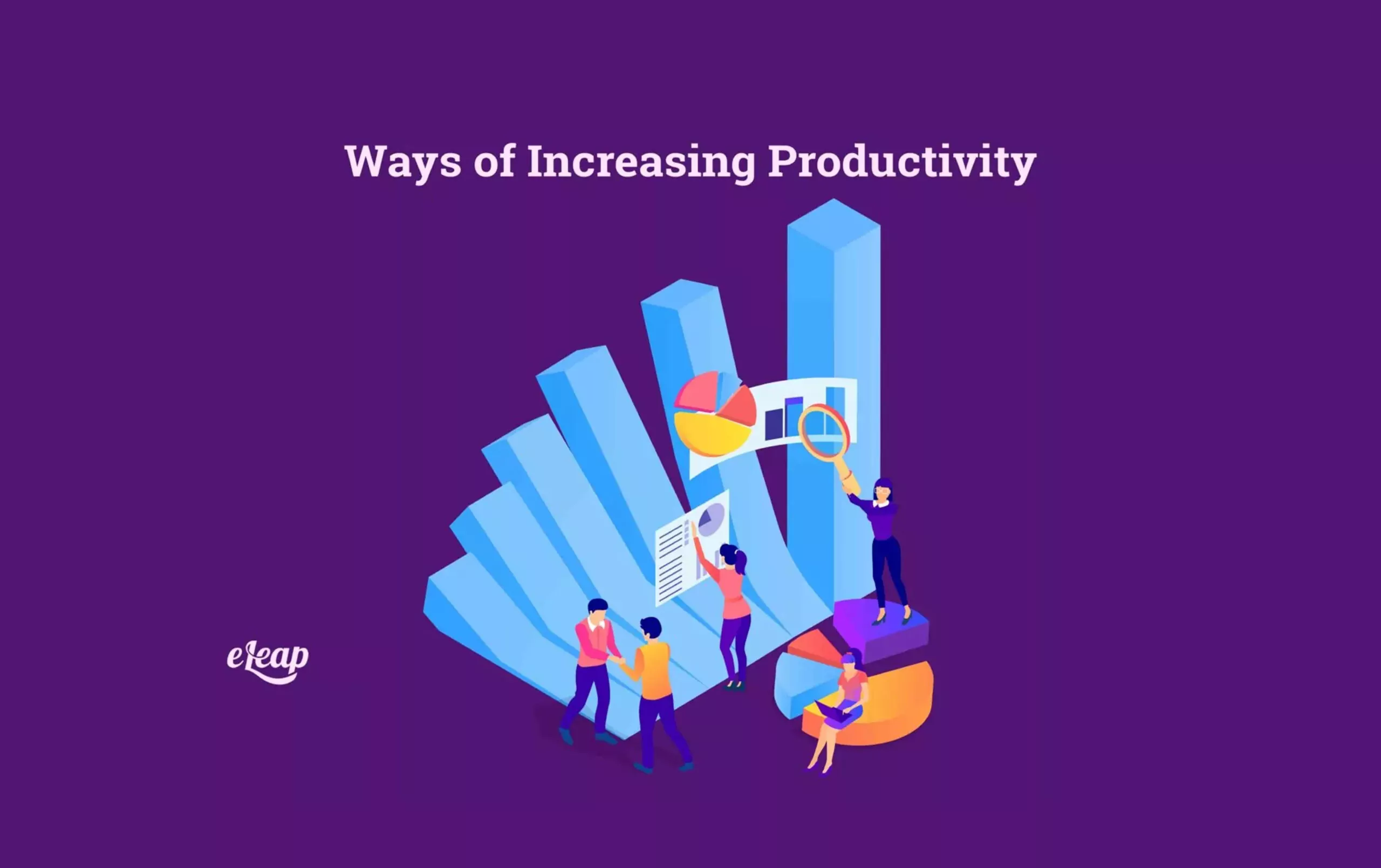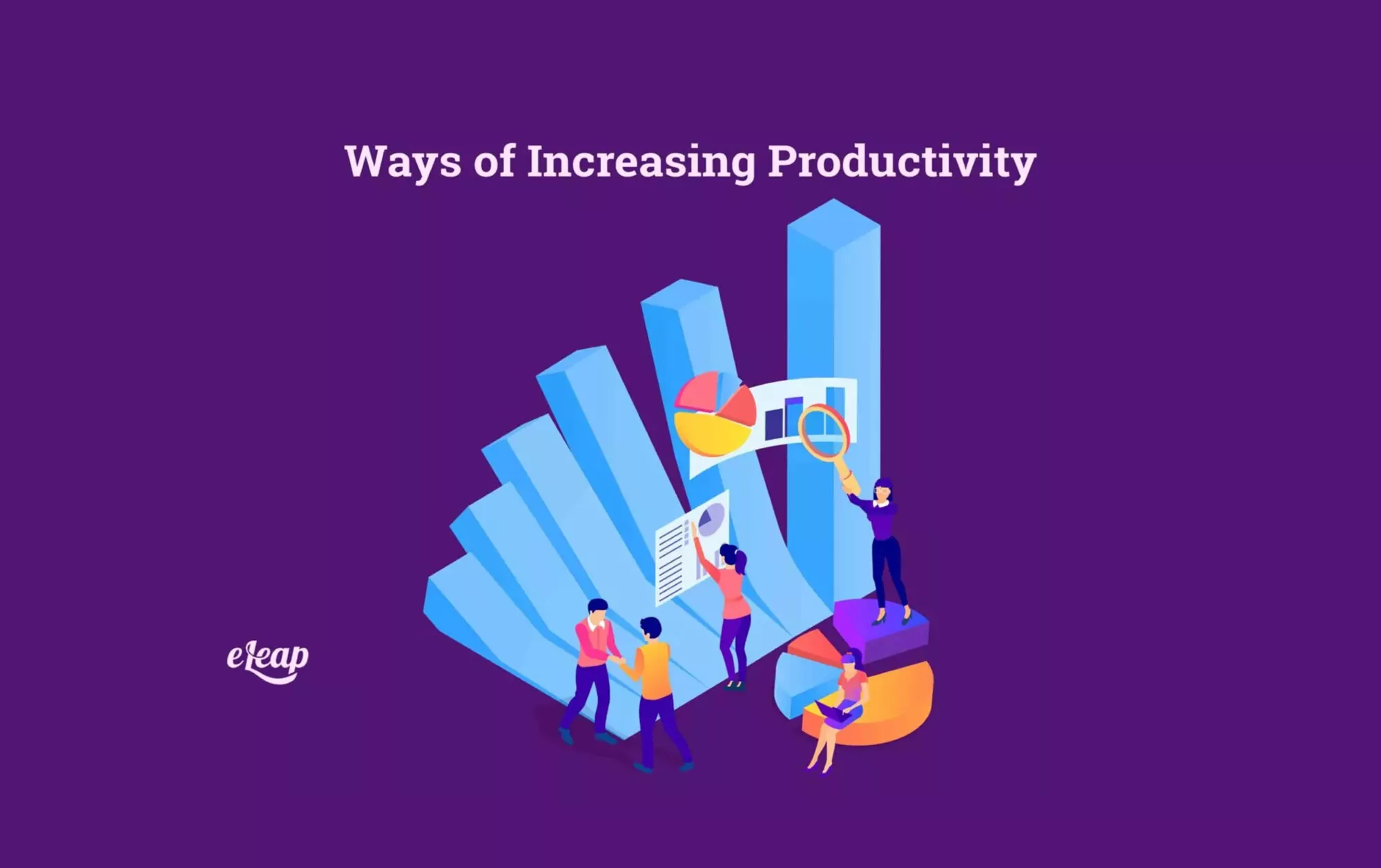Ways of Increasing Productivity

If you’re looking for ways of increasing productivity, change the way you work. We currently seem to work constantly. They bring work home with us from the office. You think nothing of checking email in bed or at the dinner table instead of focusing on our families.
We use our commute time to return phone calls or dictate correspondence. We try to cram every second full of activity in an effort to meet or exceed productivity models. Here’s the thing, though, the more we cram into our days, the less productive we really are.
We often feel overworked, putting in 50-60 hours a week. While we’re putting in long hours, we often feel like we are underappreciated, if not ignored. Many times we feel like our contributions are ignored, and we are treated more like a number than a person.
The good news is there is a movement happening that will change the way we look at leadership. The model of leadership is moving toward a more people-centered method.
Before we can truly understand the abilities and limitations of our workforce, we must understand ourselves as leaders. The new method of leadership requires us to learn about the elements that comprise a well-balanced, healthy life.
To help us toward the goal of learning about a healthy, well-balanced life, we turn toward scientific research in the areas of neuroscience, biology, and human performance. The research gives us ideas on ways of increasing productivity while spending less time.
Neuroplasticity and Ways of Increasing Productivity
Do you ever find yourself reading new ideas regarding mental health and brain chemistry? What did you learn about how brain chemistry and mental health affect the science of productivity? Using the information we learned can help us to create a people-centered work environment that is also more productive.
Once, it was thought that people could only grow and change mentally for a set length of time. Once we reach adulthood, our mental capacities and behaviors become a fixed point. However, new research puts forth the idea that, as adults, our brains still have an amazing ability to change. The new research indicates that we can destroy unhealthy neural pathways and create new ones using healthy diets, meditation, and exercise.
What does that mean for increasing productivity? It means that employees can be changed into the best possible model of themselves. When they are placed in an environment with little stress, appropriate challenges, a healthy lifestyle, and supportive leaders, their natural talents can expand. An already good employee can become a great employee, and so on.

The Paleo-mammalian Brain, Stress Hormones, and Ways of Increasing Productivity
Are you familiar with the three brains concept? Basically, we as humans have what essentially amounts to three brains. One is a primitive structure referred to as a reptilian brain, the next is the limbic brain, and the third is a specialized portion known as the neocortex.
The first portion of the brain, the reptilian brain, is comprised of the cerebellum and the stem. This is the most primitive of the three brains in the model. Reptiles and less developed animals have a similar structure, which led to the name reptilian brain. This brain is responsible for controlling breathing, heart rate, and our protective instincts.
When you feel unsafe in the workplace, the reptilian brain goes to work. When the primitive structure activates, you can’t access your center of innovation in the frontal lobe.
All mammals have a limbic brain. This is the center for emotions, memory, and aggression. This brain section controls behaviors. When we are concerned about relationships or social interactions, we are accessing the limbic brain.
The last brain, as referenced in the three-brain model, is the neo-cortex. Humans and primates have this specialized portion of the brain. We know it better than the frontal lobe. This part of the brain is the center for abstract thinking, language, and creative thinking.
Now that we’ve looked at some brain science, how does it connect to the corporate world? Every industry looks for ways to increase creativity, innovation, and productivity. If the work environment feels unsafe, the most primitive portions of the brain are activated, and innovation is stifled.
In a high-pressure environment, fear triggers adrenaline and cortisol production, which effectively shuts down the creative portions of the mind. As a leader, you want to ensure that you aren’t creating an unsafe, stressful environment. Instead, you want employees to feel calm and safe.
Life Rhythms and Ways to Increase Productivity
Many of us are constantly on the go from the moment we awake. We use commute time for emails and calls. Then, we bounce between projects at our desks all day at work amid, answering other calls, emails, and face-to-face communications.
If that sounds like your day, you aren’t alone. In our ever-increasing desire to be productive, we have succeeded in filling our time with activities, yet we still feel like we accomplish little or nothing.
It’s likely that we feel unaccomplished because our bodies aren’t designed to work that way. When working as it should, our body follows a 24-hour daily cycle that’s called a circadian rhythm. That cycle responds to light and darkness in the environment around us.
Consider a healthy sleep pattern. You don’t typically close your eyes and remain in that same state of sleep for the next eight hours. Instead, our body moves between multiple 90-minute deep sleep cycles and lighter REM sleep that houses our dreams.
Would you believe that is the same model we should be using for our workflow? Hitting the ground running and moving non-stop isn’t the way we were designed to work. At night we cycle through a circadian rhythm. During the day, we cycle through an ultradian rhythm.
The ultradian cycle includes alternating timeframes of more and less focused activity. The ideal waking rhythm is several 90-minute chunks of work time interspersed with routine breaks. One of the best ways to achieve this rhythm is to prioritize three tasks for you to focus on and then intersperse 15-minute breaks into your daily routine.
When you are becoming accustomed to this way of increasing productivity, it’s a good idea to set a timer so you don’t forget to incorporate your breaks. Use a kitchen timer or alarm clock, not your phone, to manage your time.
Some people are particularly attuned to their body’s signals. If that’s you, great! You likely won’t need to set a timer. You can simply pay attention to when you become restless, less focused, or groggy. That’s when you know you need a break.
Flow States and Increased Productivity
Do you know those times when you get so deeply into a project that everything else disappears? Many times you will find this when you are passively involved in an activity. Watching television or reading a book are examples that come to mind.
When you’ve experienced this, you’ve naturally entered a flow state. While this phenomenon happens more readily during passive activities, it can happen when we are actively working on something as well.
When we’re at work, it can be more challenging to achieve a flow state. Why? The most straightforward answer is distractions. Think about the varied distractions you routinely deal with. The phone rings, your coworker stops by your desk, and you receive an email that you need to answer.
All day we move between goals that need to be accomplished before we leave for the day. We try to multitask instead of being focused on the task at hand. Multi-tasking actually leads to decreased productivity rather than increased productivity.
Entering into a flow state of focused activity is a way of increasing productivity. To routinely enter a flow state, you should consider your goals. Are they challenging enough? Too challenging?
You should be setting goals that are challenging enough to capture and focus your attention without being so challenging they lead to frustration. After selecting appropriate goals, we need to remove all the distractions from our area.
The final aspect of a flow state is that we need to clearly see what we are achieving with each task. The ability to enter into a flow state is one of several ways of increasing productivity. Working in a flow state increases both the quality and the quantity of our work. Additionally, we benefit from the intrinsic reward of being satisfied with our efforts.
The Takeaway
A leader generally possesses a specific skill set. Their natural leadership skills and talents are usually evident. However, natural leadership skills should be complemented by a willingness to continually learn ways of increasing productivity while successfully supporting the workforce.
Knowing how people grow and improve is one step toward facilitating peak performance. Employees are designed for growth. As a leader, it’s our job to create suitable environments that help employees find their own ways of increasing their productivity. Understanding how and why our employees improve helps us to better assist them in reaching their goals.